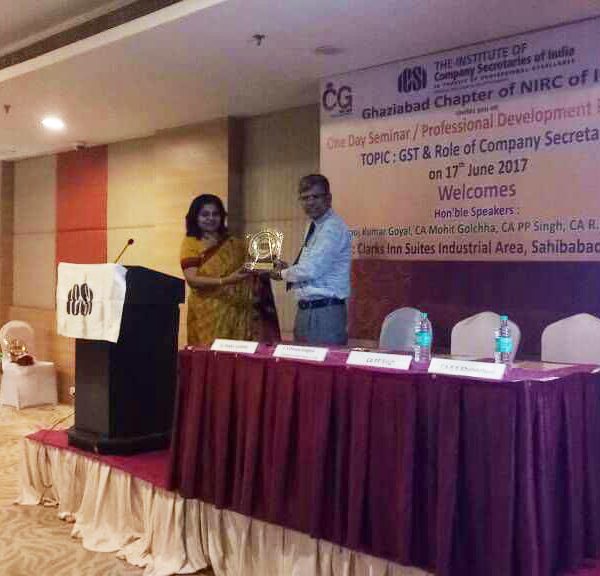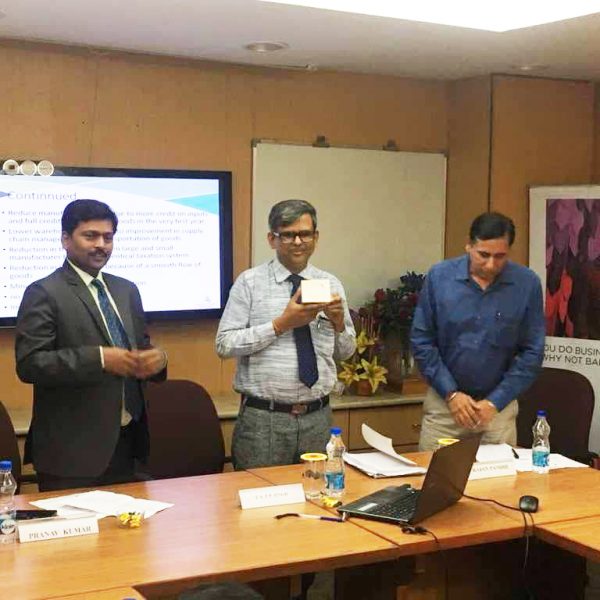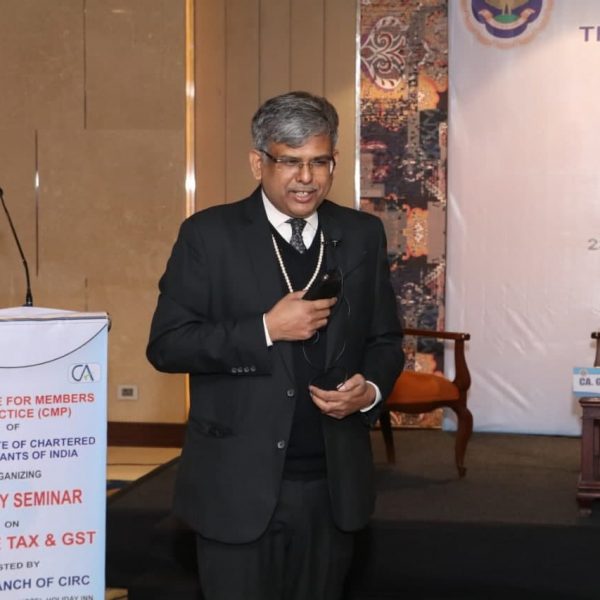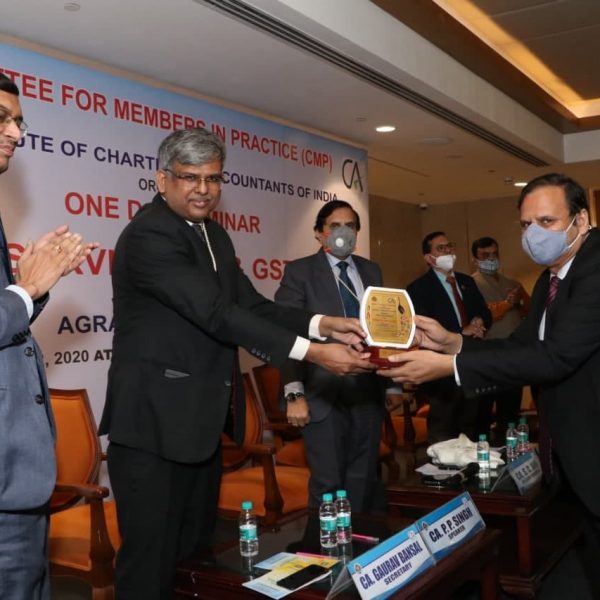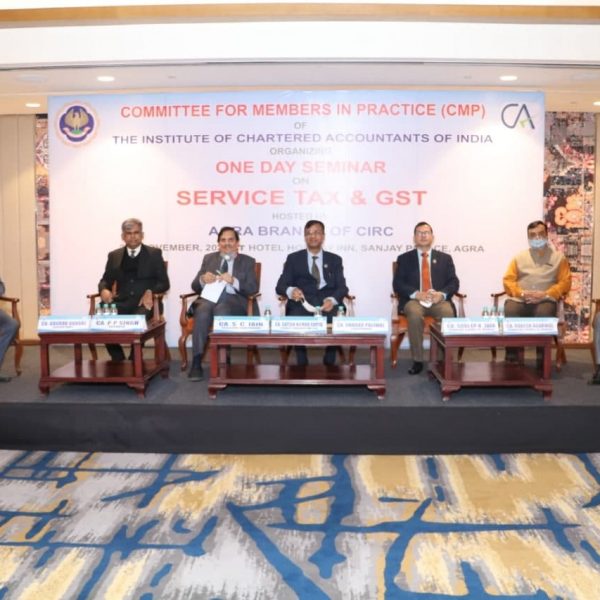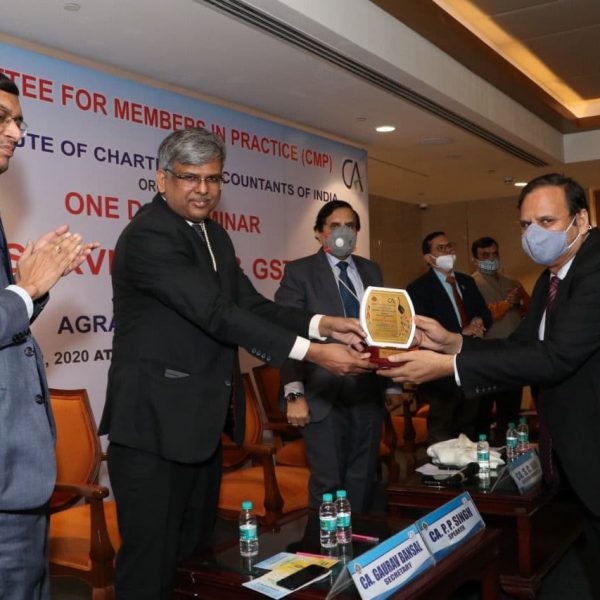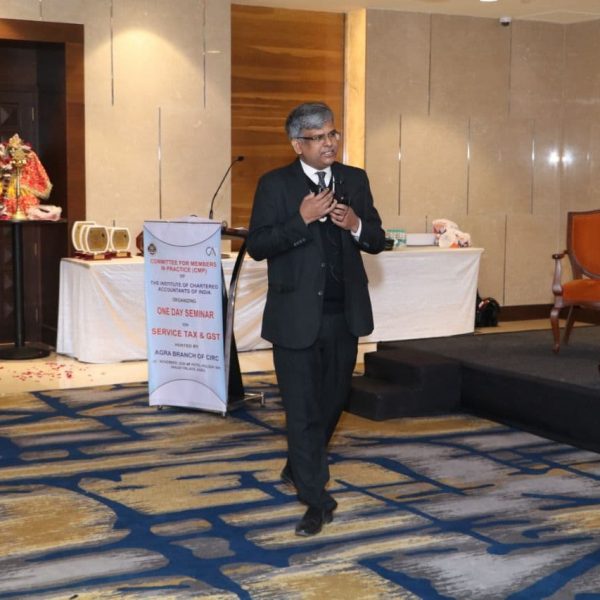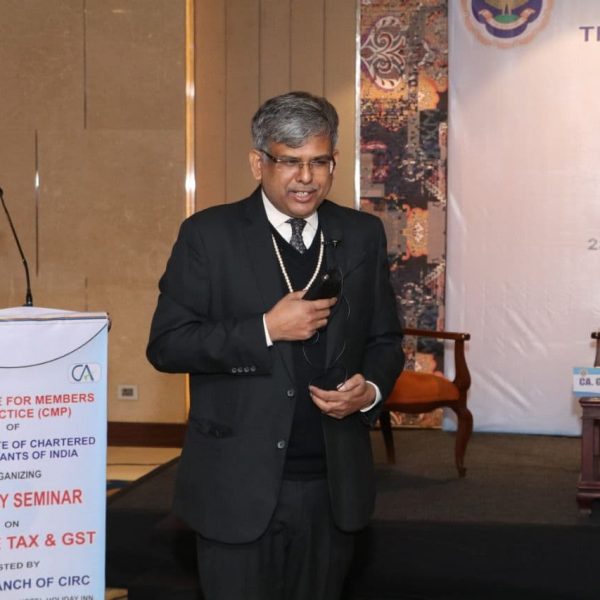Introduction: Governments are of the view that E-invoicing help in preventing GST revenue leakage, so the government has reduced the threshold limit for e-invoicing applicability from ₹ 50cr to ₹ 20cr w.e.f 01-04-2022 (earlier ₹ 100 cr) and therefore now e-invoicing is applicable to an entity having threshold aggregate turnover exceeding ₹ 20 cr.it is applicable to both suppliers of goods as well as service providers as well as exporters.
Legal backing: As per Rule 48(4) of CGST Rules
“The invoice shall be prepared by such class of registered persons as may be notified by the Government, on the recommendations of the Council, by including such particulars contained in FORM GST INV-01 after obtaining an Invoice Reference Number (hereinafter referred as IRN) by uploading information contained therein on the Common Goods and Services Tax Electronic Portal ( www. https://einvoice1.gst.gov.in/) in such manner and subject to such conditions and restrictions as may be specified in the notification:
Provided that the Commissioner may, on the recommendations of the Council, by notification, exempt a person or a class of registered persons from issuance of invoice under this sub-rule for a specified period, subject to such conditions and restrictions as may be specified in the said notification.”
Rule 48(4) inserted by notification no 68/2019 CT dated 13-12-2019
NOTIFICATION NO. 69/2019- CENTRAL TAX [F. NO. 20/13/01/2019-GST], DATED 13-12-2019 for Common Goods and Services Tax Electronic Portal for the purpose of preparation of the invoice in terms of sub-rule(4) of rule 48 of the aforesaid rules.
Threshold limit for applicability of E-invoice: At the present aggregate turnover of ₹ 20cr w.e.f. 01-04-2022 (earlier ₹ 50 cr and before that, it was ₹ 100cr.
Relevant Notifications 13/2020 dated amended from time to time (earlier notification no. 70/2019-central tax, dated 13-12-2019)
Notification no. 13/2020-central tax [g.s.r. 196(e)/f. No. 20/06/03/2020-gst], dated 21-3-2020
as amended by notification no. 61/2020-central tax [g.s.r. 481(e)/f. No. Cbec- 20/13/01/2019-gst], dated 30-7-2020, notification no. 70/2020-central tax [g.s.r. 596(e)/f.no. Cbes-20/06/09/2019-gst], dated 30-9-2020, notification no. 88/2020-central tax [g.s.r. 704(e)/f.no. Cbes-20/06/04/2020-gst], dated 10-11-2020, notification no. 5/2021-central tax [g.s.r. 160(e)/f.no. Cbes-20/13/01/2019-gst], dated 8-3-2021, notification no. 23/2021-central tax [g.s.r. 367(e)/f.no. Cbic-20001/5/2021], dated 1-6-2021, notification no. 1/2022-central tax [g.s.r. 159(e)/f.no. Cbic-20021/1/2022-gst], dated 24-2-2022
In exercise of the powers conferred by sub-rule (4) of rule 48 of the Central Goods and Services Tax Rules, 2017(hereinafter referred as said rules), the Government on the recommendations of the Council, and in supersession of the notification of the Government of India in the Ministry of Finance, Department of Revenue No. 70/2019 – Central Tax, dated the 13th December, 2019, published in the Gazette of India, Extraordinary, Part II, Section 3, Sub-section (i) vide number G.S.R. 926 (E), dated the 13th December, 2019, except as respects things done or omitted to be done before such supersession, hereby notifies registered person, other than [a government department, a local authority,] [a Special Economic Zone unit and] those referred to in sub-rules (2), (3), (4) and (4A) of rule 54 of the said rules, whose aggregate turnover in [*any preceding financial year from 2017-18 onwards] exceeds ₹ 20 crore , as a class of registered person who shall prepare invoice and other prescribed documents, in terms of sub-rule (4) of rule 48 of the said rules in respect of supply of goods or services or both to a registered person or * for Exports.
- This notification shall come into force from the 1st of October 2020.
Note: *NOTIFICATION NO. 70/2020 – CENTRAL TAX [G.S.R. 596(E)] [F. NO. CBEC-20/06/09/2019-GST], DATED 30-9-2020.
IMPORTANT POINTS:
Applicable where supplier and recipient both are registered
Applicable even for export
Threshold limit of Aggregate turnover of ₹ 20cr/50cr/10cr to be checked in any of the preceding FY of GST regime
Example: amount in ₹ crore
| Turnover | FY 2017-18 | 2018-19 | 2019-20 | 2020-21 | 2021-22 | Applicable /not applicable |
| 15 | 25 | 18 | 17 | 5 | yes | |
| 18 | 21 | 14 | 16 | 19 | yes | |
| 17 | 18 | 19 | 16 | 21 | yes | |
| 18 | 19 | 19.5 | 18 | 19 | no |
Changes in threshold ₹ 20 crores Substituted for “₹ 50 crores” by Notification No. 1/2022-Central Tax [G.S.R. 159(E)/F. No. CBIC-20021/1/2022-GST], Dated 24-2-2022, w.e.f. 1-4-2022. Earlier said words were amended by Notification No. 5/2021-Central Tax [G.S.R. 160(E)/F.NO. CBES-20/13/01/2019-GST], dated 8-3-2021,
What documents are presently covered under e-invoicing?
| i. | Invoices | |
| ii. | Credit Notes under GST | |
| iii. | Debit Notes, under GST | |
| when issued by notified class of taxpayers (to registered persons (B2B) or for the purpose of Exports)are currently covered under e-invoice. |
Though different documents are covered, for ease of reference and understanding, the system is referred as ‘e-invoicing’.
What supplies are presently covered under e-invoice?
Supplies to registered persons (B2B), Supplies to SEZs (with/without payment), Exports (with/without payment), and Deemed Exports, by notified class of taxpayers are currently covered under e-invoicing.
Whether e-invoicing is applicable for invoices between two different GSTINs under same PAN?
Yes. e-invoicing by notified persons is mandated for supply of goods or services or both to a registered person.
As per Section 25(4) of CGST/SGST Act, “A person who has obtained or is required to obtain more than one registration, whether in one State or Union territory or more than one State or Union territory shall, in respect of each such registration, be treated as distinct persons for the purposes of this Act. “
High sea sales and bonded warehouse sales, whether e-invoicing is applicable?
No. These activities/transactions are neither supply of goods nor a supply of services, as per Schedule III of CGST/SGST Act.
What is the applicability of e-invoices for import transactions?
E-invoicing is not applicable for import Bills of Entry
Whether e-invoicing is applicable for supplies by notified persons to Government Departments?
E-invoicing by notified persons is mandated for the supply of goods or services or both to a registered person.
Thus, where the Government Department doesn’t have any registration under GST (i.e. not a ‘registered person’), e-invoicing doesn’t arise.
However, where the Govt. department is having a GSTIN (as entity supplying goods/services/deducting TDS), the same has to be mentioned as the recipient’s GSTIN in the e-invoice.
Do SEZ Developers need to issue e-invoices?
Yes, if they have the specified turnover and fulfilling other conditions of the notification.
In terms of Notification (Central Tax) 61/2020 dt. 30-7-2020, only SEZ Units are exempted from issuing e-invoices.
- Are Free Trade & Warehousing Zones (FTWZ) exempt from e-invoicing?
Yes. As per Foreign Trade Policy, Free Trade & Warehousing Zones (FTWZ) are only a special category of Special Economic Zones, with a focus on trading and warehousing.
- Is e-invoicing applicable for supplies by notified persons to SEZs?
Yes, e-invoicing is applicable for supplies by notified persons to SEZs.
In terms of Notification (Central Tax) 61/2020 dt. 30-7-2020, only SEZ Units are exempt from issuing e-invoices.
There is an SEZ unit and a regular DTA unit under same legal entity (i.e. having same PAN). The aggregate total turnover of the legal entity is more than Rs. 500 Crores (considering both the GSTINs). However, the turnover of DTA unit is below Rs. 100 crores for FY 19-20.
In this scenario, as SEZ unit is exempt from e-invoicing, whether e-invoicing will be applicable to DTA Unit?
Yes, because the aggregate turnover of the legal entity in this case is > Rs. 500 Crores. The eligibility is based on aggregate annual turnover on the common PAN.
Is e-invoicing applicable to invoices issued by Input Service Distributor (ISD)?
No
- Whether e-invoicing is applicable for supplies involving Reverse Charge?
If the invoice issued by the notified person is in respect of supplies made by him but attracting reverse charge under section 9(3), e-invoicing is applicable.
For example, a taxpayer (say, a Firm of Advocates having an aggregate turnover in a FY is more than Rs. 500 Cr.)is supplying services to a company (who will be discharging tax liability as a recipient under RCM), such invoices have to be reported by the notified person to IRP.
On the other hand, where supplies are received by the notified person from (i) an unregistered person (attracting reverse charge under section 9(4))or (ii) through the import of services, e-invoicing doesn’t arise/is not applicable.
What are various modes for generation of e-invoice?
Multiple modes are available so that taxpayer can use the best mode based on his/her need:
| a. | API based (integration with Taxpayer’s System directly) | |
| b. | API based (integration with Taxpayer’s System through GSP/ASP) | |
| c. | Free Offline Utility (‘Bulk Generation Tool’, downloadable from IRP) | |
|
|
Will IRP store/archive e-invoices?
No. IRP will only be a pass-through portal which performs prescribed validations on invoice data and generates IRN. It will not store or archive e-invoice data.
Will it be possible for bulk uploading of invoices to IRP?
Yes. It is possible. The offline utility (‘bulk generation tool’) serves this purpose.
Further, the ERP or accounting systems used by large taxpayers can be designed in such a way that they can report invoices in bulk to IRP.
However, reporting to IRP and generation of IRN will be one after another (which will not be visible for user). For the user, it will appear like bulk upload and bulk receipt.
How is ‘e-invoicing’ different from the present system?
There is not much difference indeed.
Registered persons will continue to create their GST invoices on their own Accounting/Billing/ERP Systems. These invoices will now be reported to ‘Invoice Registration Portal (IRP) www. https://einvoice1.gst.gov.in/) ‘by uploading JSON file of the invoice. On uploading JSON of the invoice, we can download the JSON of e-invoice with a unique ‘Invoice Reference Number (IRN)‘ and add a QR Code. Then, the invoice can be issued to the receiver with IRN along with QR Code from its own accounting /billing system. A GST invoice will be valid only with a valid IRN.
What are the various types of fields in e-invoice schema?
| a. | Data for fields marked as ‘Mandatory’ have to be provided compulsorily. | |
| b. | A mandatory field not having any value can be reported as NIL. | |
| c. | Fields marked as ‘Optional’ may or may not be filled up. Many of these are relevant for specific businesses (e.g. Batch No. , Attributes etc.) and to cater to specific scenarios (e.g. export, e-way bill etc.). | |
| d. | Some sections in the schema are marked as ‘Optional’. But, if this section is selected, some of the fields may be mandatory. For example, the section ‘e-way Bill Details’ is marked as optional. But, if this section is chosen, the field, Mode of Transportation’ is mandatory. |
What is ‘cardinality’, as mentioned in schema?
In e-invoice schema, for each field, ‘Cardinality’ is marked as 0.. 1/1.. 1/1..n/0..n. This is to denote whether a field is ‘mandatory’ and whether it is ‘repetitive’.
| Notation | Meaning |
| Starts with 0 | Optional field |
| Starts with 1 | Mandatory field |
| Ends with 1 | Data for the field can be entered only once |
| Ends with n | Data for the field can be entered multiple times |
Can the supplier place their entity logo on e-invoice? Is this part of schema?
Elements of invoice which are internal to business, such as company logo etc. are not part of e-invoice schema.
After reporting invoice details to IRP and receipt of IRN, at the time of issuing invoice to receiver (e.g. generating as PDF and printing as paper copy or forwarding via e-mail etc.), any further customization, i.e. insertion of company logo, additional text etc., can be made by respective ERP/billing/accounting software providers.
- What is the maximum number of line items which can be reported in an invoice?
The limit is kept at 1000 presently. It will be enhanced based on requirement in future.
- In the e-invoice schema, the amount under ‘other charges (item level)’ is not part of taxable value. However, some charges to be shown in invoice are leviable to GST. How to mention them?
Such other charges (taxable), e.g. freight, insurance, packing & forwarding charges etc. may be added as one more line item in the invoice.
How a typical IRN looks like?
IRN is a unique 64-character hash, e.g. 35054cc24d97033afc24f49ec4444dbab81f542c555f9d30359dc75794e06bbe
- Can IRP reject a submitted invoice? On reporting invoice details to IRP, what validations will performed on the portal?
Yes. IRP can reject an invoice.
IRP will check whether the invoice was already reported and existing in the GST System. (This validation is based on the combination of Supplier’s GSTIN-Invoice Number-Type Of Document-Fin.Year, which is also used for generation of IRN). In case the same invoice (document) has already been reported earlier, it will be rejected by IRP.
Certain other key validations will also be performed on portal. In case of failure, registration of invoice won’t be successful, IRN won’t be generated and invoice will be rejected along with relevant error codes (which give idea about reasons for rejection.)
- On reporting invoice details, what will be returned by IRP? Will it return signed JSON or PDF or both?
IRP will return only the signed JSON. No PDF will be returned. On receipt of signed JSON, it is for the respective ERP or Accounting & Billing software system to generate PDF, if needed.
- What is the indication for the supplier that IRP has registered the reported invoice?
Upon successful registration of invoice on IRP, it will return a signed e-invoice JSON to the supplier with IRN and QR Code.
- E-invoice – Printing of Invoice/IRN/QR Code
- Can I print an e-invoice?
Yes. Once the IRP returns the signed JSON, your ERP/Accounting/Billing System it into PDF and printed if required.
Businesses who don’t have their own ERP/Accounting Software, will be downloading and using the free offline utility (‘bulk generation tool’) to upload invoice data on e-invoice portal and obtain signed invoice (in JSON). In this scenario also, there is a facility on e-invoice portal to generate ‘human-readable’ PDF copy of invoice (for save/print/e -mail etc.).
Exclusion from the applicability of E-invoicing:
- SEZ UNIT
| § insurer or a banking company or a financial institution, including a non-banking financial company |
| § goods transport agency supplying services in relation to transportation of goods by road in a goods carriage |
| § Suppliers of passenger transportation service |
| § Suppliers of services by way of admission to exhibition of cinematograph films in multiplex screens |
- Entity aggregate turnover in all the FYs of GST regime is less than the threshold limit of ₹ 20 crores.
E-invoice required to be issued but not issued only normal invoice issue: As per rule 48(5), every invoice issued by a person to whom sub-rule 48(4) applies in any manner other than the manner specified in the said sub-rule shall not be treated as an invoice. In other words, such an invoice shall not be considered an invoice issued. Therefore penalty under section 122 may be imposed for making supplies without issuing the invoice.
Amendment:
Can I amend the details of a reported invoice for which IRN has already been generated?
Amendments are not possible on IRP. Any changes in the invoice details reported to IRP can be carried out on the GST portal (while filing GSTR-1). In case GSTR-1 has already been filed, then use the mechanism of the amendment as provided under GST.
However, these changes will be flagged the o proper officer for information.
Cancellation:
Can an IRN/invoice reported to IRP be cancelled? If yes, what is time limit
Yes. The cancellation request can be triggered through ‘Cancel API’ within 24 hours from the time of reporting the invoice to IRP.
However, if the connected e-way bill is active or verified by officer during transit, cancellation of IRN will not be permitted.
In case of cancellation of IRN, GSTR-1 also will be updated with such ‘cancelled’ status.
Can an invoice number of a cancelled IRN be used again?
No. Once an IRN is cancelled, the concerned invoice number cannot be used again to generate another e-invoice/IRN (even within the permitted cancellation window). If it is used again, then the same will be rejected when it is uploaded on IRP.
This is because IRN is a unique string based on Supplier’s GSTIN, Document Number, Type of Document & Financial Year.
Can I partially cancel a reported invoice?
No. It has to be cancelled in toto. No partial cancellation of reported e-invoice allowed.
Conclusion: government is increasing the scope of E-invoicing day by day by reducing the threshold limit.

